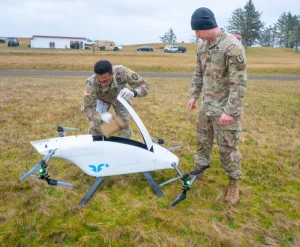Innovative Approaches Needed to Model Adversary Situational Awareness
Date: February 10, 2025
In a significant move, U.S. military researchers are reaching out to the industry for novel methods to model adversaries’ situational awareness and predict their future behaviors. This initiative is part of the Kallisti program initiated by the U.S. Defense Advanced Research Projects Agency (DARPA) based in Arlington, Virginia, which issued a program solicitation (DARPA-PS-25-06) last Thursday.
Objectives of the Kallisti Program
The Kallisti program aims to equip national security decision-makers with enhanced strategies for deterring or encouraging desired actions from adversaries. It seeks to develop an algorithmic framework that effectively models and simulates an adversary’s situational awareness and future actions. This includes understanding an adversary’s assessment of their environment, risk-reward calculations, and the strategies they employ to project future military scenarios.
Enhancing Tactical Efficiency
By integrating advanced algorithms with human expertise, the initiative strives to simulate various potential actions in national security contexts with unprecedented breadth and efficiency. This is intended to bolster deterrence and compellence strategies. The structure of the Kallisti program involves a comprehensive 30-month timeline divided into three phases of 12 months, 6 months, and another 12 months.
Key Participation Details
Participants must handle controlled unclassified information (CUI), thus organizations interested in taking part need to request the CUI addendum by February 14, 2025, through email at darpa-info@darpa.mil with the subject line containing Request DARPAPS-25-06. Additionally, detailed guidance on submitting abstracts and proposals will be shared via DOD Safe, with the deadline for abstracts set for February 28, 2025, and written and oral proposals due by April 4, 2025. Multiple contract awards are anticipated throughout this process.
For further inquiries, contact DARPA at darpa-info@darpa.mil. More detailed information can be accessed online at SAM.gov.
About the Author
John Keller is the editor-in-chief of Military & Aerospace Electronics Magazine, providing extensive insights into electronics and technologies utilized in military, space, and commercial aviation applications. He has been a pivotal member of the Military & Aerospace Electronics team since 1989 and has held the chief editor position since 1995.













